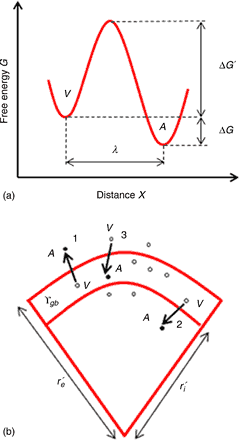Article contents
Field-assisted selective-melt sintering: a novel approach to high-density ceramics
Published online by Cambridge University Press: 08 August 2013
Abstract

Electrical fields can be used to heat selectively dislocations and grain boundaries to a much higher temperature compared with the bulk. This selective joule heating, if uncontrolled by limiting the current flow, can lead to melting of grain boundaries and sintering of poly- and nanocrystalline materials close to the theoretical density in a much shorter time due to fast diffusivities of the order of 10−4 to 10−5 cm2/s in the liquid. I refer to this sintering mode as selective-melt sintering, which can occur at lower overall temperatures with much lower energy consumption compared with conventional sintering involving solid-state diffusion.
- Type
- Research Letters
- Information
- Copyright
- Copyright © Materials Research Society 2013
References
- 1
- Cited by


